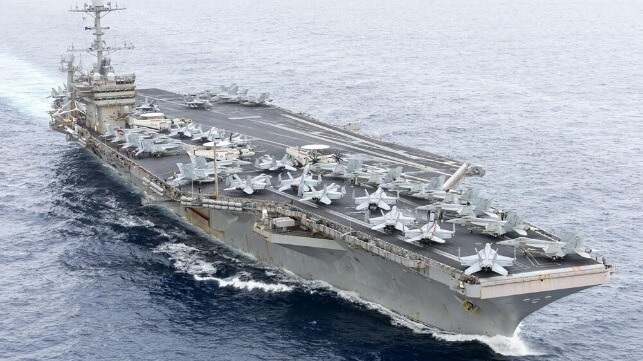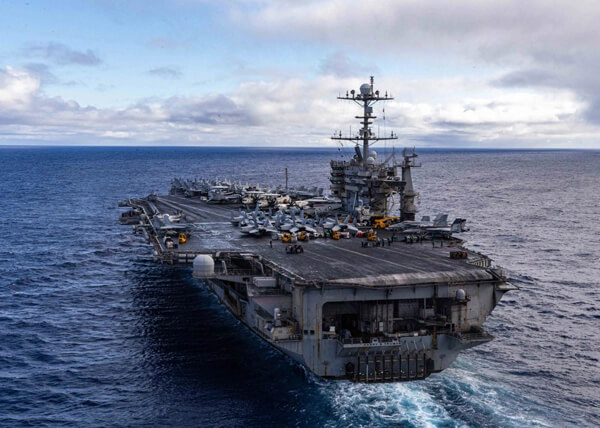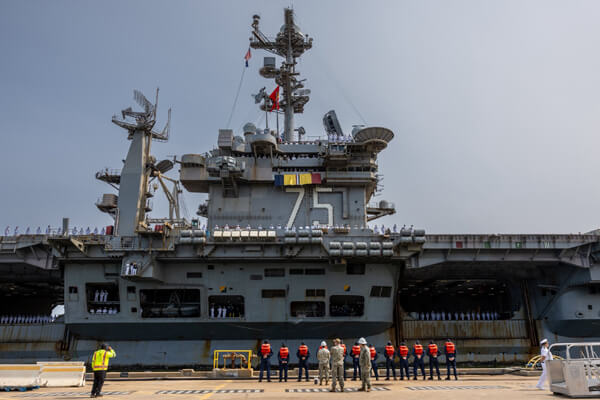USS Truman Returns Home After “Most Combat-Intensive Mission” in Decades

USS Harry S. Truman and her carrier group pulled into Norfolk, Virginia on June 1 ending what the U.S. Navy is calling one of its “most combat-intensive missions” in decades. The carrier which just a few years ago had been expected to enter early retirement instead sailed over 63,000 nautical miles, spending five months in combat with the Houthi rebels, and completing what has been termed “the largest airstrike ever conducted from an aircraft carrier.”
The strike group departed for deployment in September 2024 with the cruiser USS Gettysburg, and destroyers USS Stout and USS Jason Dunham escorting USS Harry S. Truman. Aboard were nine embarked squadrons of Carrier Air Wing 1.
The first portion of her deployment was routine with the vessels dispatched to the North Sea to participate in NATO’s Neptune Strike 24-2 exercise. They visited Portugal, Norway, and Italy and made port calls in Norway, Sweden, Finland, Germany, Spain, France, Croatia, and Greece. However, the mission changed in mid-December when the group was ordered into the Red Sea region.

USS Harry S. Truman relieved USS Abraham Lincoln and her carrier strike group which had been waging the campaign against the Houthi militants in Yemen following the USS Eisenhower. They were engaged for more than a month and became the target of the Houthis before the militants announced they would honor the ceasefire between Israel and Hamas in Gaza. On multiple occasions, the Houthis claimed to have chased Truman north in the Red Sea with missile and drone assaults.
The carrier group was briefly sent back into the Mediterranean before being redeployed back into the Red Sea. On February 1, the strike group delivered 124,000 pounds of ordnance against targets In Somalia, which is reported to be the single largest strike from a carrier. Following that, the Truman Strike Group started what became a sustained 52-day assault on the Houthis. During that period over 1,000 targets were struck before the U.S. announced a ceasefire in mid-May.
The deployment was extended by the Pentagon before the decision to bring the carrier home in late May. According to the Navy, during the deployment, the strike group completed more than 13,000 sorties and 25,000 flight hours.
“For more than 50 days, the crew operated on the front lines, thwarting numerous attacks, and never gave up the fight,” USNI News reports Captain Chris Hill, the second commanding officer of the Truman during the campaign told reporters. “In fact, they employed more than 1.1 million pounds of ordnance against the enemy.”

It was an eventful deployment for Truman as she was not only under frequent attack by the Houthis. She collided with a cargo ship as she prepared for a transit of the Suez Canal which led to her captain being relieved and replaced by Hill who had just finished a similar mission aboard the Eisenhower in the Red Sea. The Truman also lost three aircraft, one was shot down in December in a friendly fire incident with USS Gettysburg, one was lost overboard while it was being towed and the carrier took evasive maneuvers during a Houthi attack, and a third lost when the arresting wire failed to stop the fighter jet.
At a total of 251 days, it was not the carrier’s longest deployment. USNI News reports she spent 285 days at sea in 2022.
On her return to base in Norfolk, Harry S. Truman is slated to begin an extended overhaul and refueling. In 2019, the Navy had contemplated retiring the carrier instead of proceeding with the life-extension overhaul. The multi-year project follows similar recent overhauls for USS George Washington and USS John C. Stennis.
